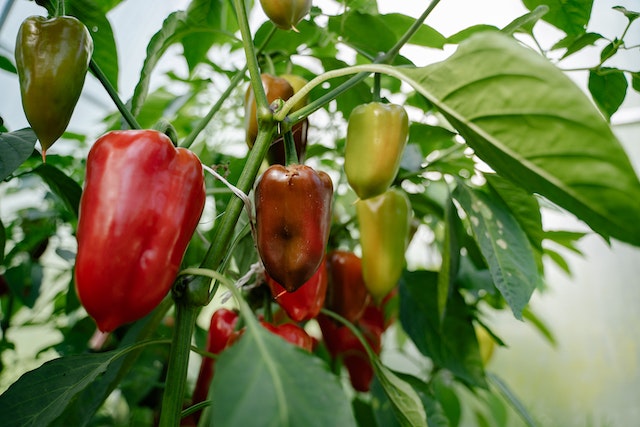How Can I Make My Peppers Grow Faster?
To make your peppers grow faster, you can compost, transplant, and prune them. Composting helps improve the root system of your plants, which in turn helps your plants grow faster. Transplanting also helps improve the root system of your plants and helps them to grow faster. Pruning your plants can help them to grow faster by allowing more light and air to reach the leaves and stems.
Why Are Your Peppers Growing So Slow?
One possible reason your peppers grow slowly so slowly is that they aren’t getting enough water. Make sure you’re watering your pepper plants regularly and giving them enough water to drink. Another possibility is that your pepper plants are transplants. It can take transplanted pepper plants a while to get settled in and start growing quickly. If you’re growing peppers indoors, make sure you’re giving them enough light – peppers need a lot of light to grow well. Finally, remember that peppers are a warm-weather crop – they won’t start growing quickly until the weather warms up and it’s officially growing season. If it’s still early in the season, your pepper plants will grow slowly until the weather warms up. Once the weather gets hot, your pepper plants should start growing more quickly.
Fertilizing and Picking Peppers
Picking peppers is a bit different than picking other vegetables. Peppers can be eaten at any stage of their growth, but they are typically picked when they are red or green and before they start to turn yellow. To pick a pepper, simply twist it off of the plant. Be careful not to damage the plant when you do this.
Peppers need to be fertilized every two weeks during the growing season. A general-purpose fertilizer that is high in nitrogen will work well.
What Is the Best Fertilizer for Chili Plants?
The best fertilizer for chili plants is compost. Chili plants need nitrogen to grow, and compost provides this essential nutrient. Pepper plants also need to be well-watered, and compost helps retain water in the soil. Indoor chili plants may need additional fertilizer, but compost is a good start.
How to make peppers grow faster
To make peppers grow faster, start by transplanting them into the garden. Peppers need lots of water, so make sure to keep them well hydrated. You can also prune the pepper plant to encourage growth. If you’re growing peppers indoors, use grow lights and compost to give them a head start. Finally, fertilize the plants every few weeks to help with growth. By following these tips, you’ll be able to grow peppers in no time!
THE BASICS OF STARTING PEPPERS FROM SEED
The key to success with growing peppers from seed is providing bottom heat. Peppers are tropical plants and need a little extra help getting started in the spring. I like to start my pepper seeds indoors about 8 weeks before the last frost date for my area.
To provide bottom heat, I use a simple seed-starting mat that I plug into an outlet. You can find these mats at any garden center or online. They’re not expensive, and they make starting pepper seeds much easier.
I start my pepper seeds in small pots filled with a quality potting mix. I like to use a mix that contains some perlite or vermiculite for drainage. Once the seeds have germinated and the seedlings have their first true leaves, I transplant them into larger pots.
Pepper plants need full sun to thrive, so once they’ve been transplanted, I put them under grow lights. I keep the lights on for 14-16 hours per day to give the plants the light they need.
Water your pepper seedlings regularly, but don’t let them sit in water. Peppers don’t like wet feet and will quickly develop root rot if they
Pepper Seedling Care Tips
When it comes to pepper seedling care, there are a few things you need to keep in mind. First of all, make sure that you plant your pepper seedlings in a well-draining soil mix. Pepper plants do not like wet feet, so if your soil is too dense, it could lead to root rot.
Another important tip for pepper seedling care is to make sure that you keep an eye on the water needs of your plants. Pepper plants are native to tropical and subtropical regions, so they prefer a moist environment. However, too much water can also lead to problems like root rot. Water your pepper seedlings when the top inch of soil feels dry to the touch.
Finally, make sure that you fertilize your pepper seedlings regularly. A good fertilizer will provide the nutrients that young pepper plants need to grow strong and healthy. Apply a balanced fertilizer every two weeks or so during the growing season.

